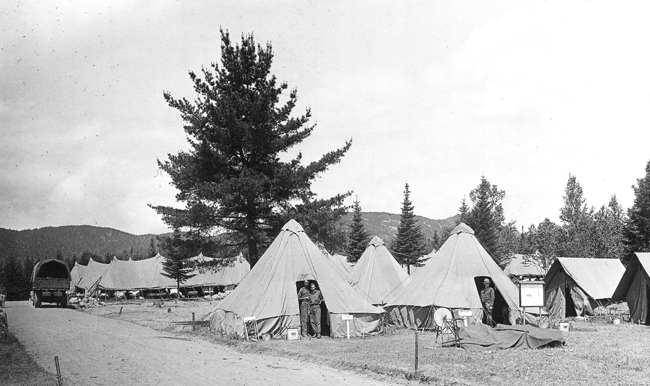B A C K T H E N
Carvers Harbor
Vinalhaven Island was a busy place in the early 1900s, cutting granite, catching and curing fish, coopering, making glue, and knitting fly netting for horses.
Across the harbor we are looking at the buildings of the Lane-Libby Fisheries Company, which annually cured six to eight million pounds of groundfish obtained from local boats and smaller dealers along the coast. Most was sold in the northeast states as boxed boneless fish, while large quantities of hard dried fish were shipped to South America and the West Indies. Fertilizer, glue, oil, and dried sounds (swim bladders, used to settle beer and make isinglass) were byproducts. Had the photographer arrived on another day, an Italian salt bark might have provided a picturesque centerpiece.
We do see Friendship sloops, likely most now with motors. The fioating machine shop and the gasoline barge are manifestations of the internal combustion revolution. The small, lofty schooner is a puzzler—she looks like a yacht-like pre-engine-revolution lobster smack. The three-masted schooner has likely come to load paving or salt fish. Dories ride on moorings, while two high-sided peapods and a skiff are tied to a lobster-storing “car” in the foreground.
Text by William H. Bunting from Maine On Glass. Published by Tilbury House Publishers, 12 Starr St., Thomaston, Maine. 800-582-1899.
Maine On Glass and prints of the photographs are available through the Penobscot Marine Museum: PenobscotMarineMuseum.org.

